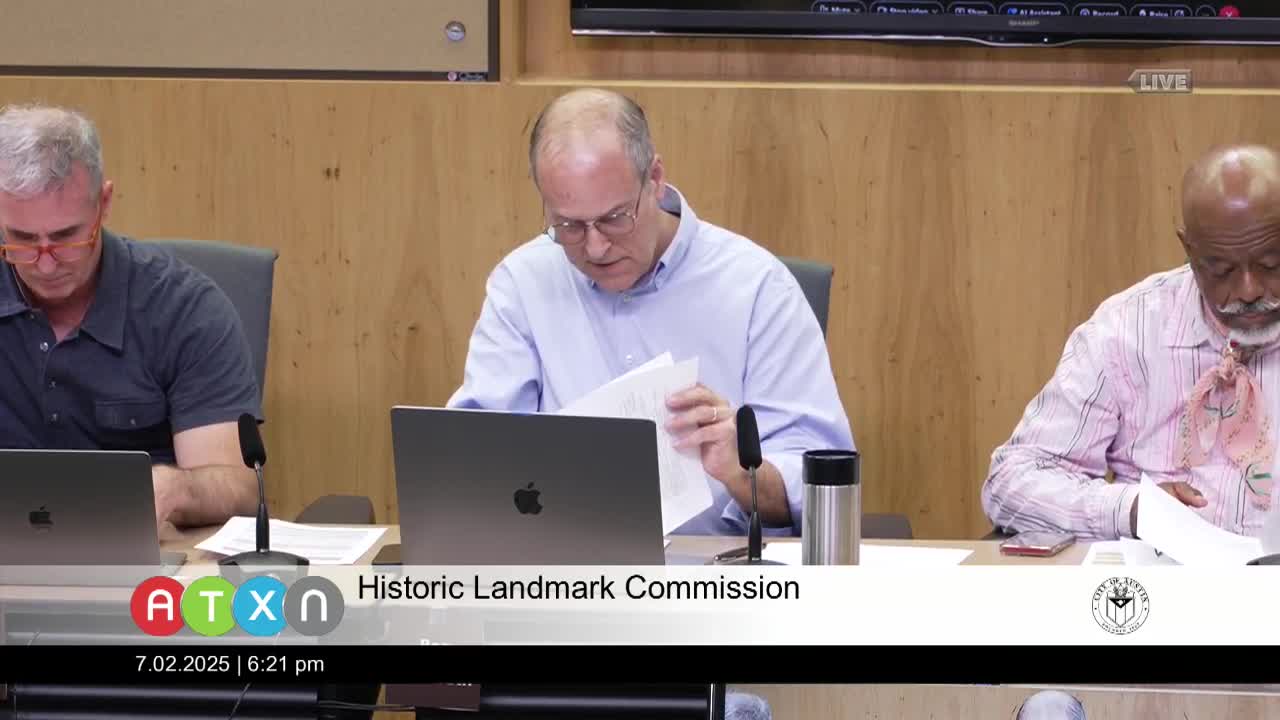Austin launches Downtown Historic Resource Survey to preserve cultural heritage
July 02, 2025 | Austin, Travis County, Texas
This article was created by AI summarizing key points discussed. AI makes mistakes, so for full details and context, please refer to the video of the full meeting. Please report any errors so we can fix them. Report an error »

The Austin Historic Preservation Office recently presented the final briefing on the Downtown Austin Historic Resource Survey, a significant project aimed at documenting and preserving the city's rich architectural heritage. This survey, the first update in over 40 years, covers nearly 2,000 resources across downtown Austin, providing essential data for future preservation efforts.
Commissioner Kim McKnight emphasized the importance of the survey, noting that it serves as a foundational tool for historic preservation. The survey identifies buildings and structures over 50 years old, evaluates their historical significance, and recommends potential local historic districts. With over 81% of surveyed resources eligible for landmark designation, the findings highlight the need for proactive measures to protect Austin's historical assets.
The survey's methodology involved extensive fieldwork, including photographing each resource and assessing its architectural integrity. The results will guide the Historic Landmark Commission in making informed decisions regarding demolition permits and zoning applications, ensuring that the city's historical narrative is preserved for future generations.
In addition to the survey, the meeting also addressed the Heritage Preservation Grant program, which supports historic preservation projects and promotes tourism. The program has been redesigned to simplify the application process and expand funding opportunities for diverse voices within the community. Notable projects funded through this grant include the restoration of the Henry G. Madison log cabin and educational initiatives at Austin's first Black cemetery.
As Austin continues to grow, the preservation of its historical sites remains a priority. The Historic Preservation Office is committed to updating surveys every decade and engaging with the community to ensure that all voices are heard in the preservation process. The outcomes of this meeting set a clear path forward for safeguarding Austin's unique heritage while fostering a deeper connection to its diverse history.
Commissioner Kim McKnight emphasized the importance of the survey, noting that it serves as a foundational tool for historic preservation. The survey identifies buildings and structures over 50 years old, evaluates their historical significance, and recommends potential local historic districts. With over 81% of surveyed resources eligible for landmark designation, the findings highlight the need for proactive measures to protect Austin's historical assets.
The survey's methodology involved extensive fieldwork, including photographing each resource and assessing its architectural integrity. The results will guide the Historic Landmark Commission in making informed decisions regarding demolition permits and zoning applications, ensuring that the city's historical narrative is preserved for future generations.
In addition to the survey, the meeting also addressed the Heritage Preservation Grant program, which supports historic preservation projects and promotes tourism. The program has been redesigned to simplify the application process and expand funding opportunities for diverse voices within the community. Notable projects funded through this grant include the restoration of the Henry G. Madison log cabin and educational initiatives at Austin's first Black cemetery.
As Austin continues to grow, the preservation of its historical sites remains a priority. The Historic Preservation Office is committed to updating surveys every decade and engaging with the community to ensure that all voices are heard in the preservation process. The outcomes of this meeting set a clear path forward for safeguarding Austin's unique heritage while fostering a deeper connection to its diverse history.
View full meeting
This article is based on a recent meeting—watch the full video and explore the complete transcript for deeper insights into the discussion.
View full meeting
